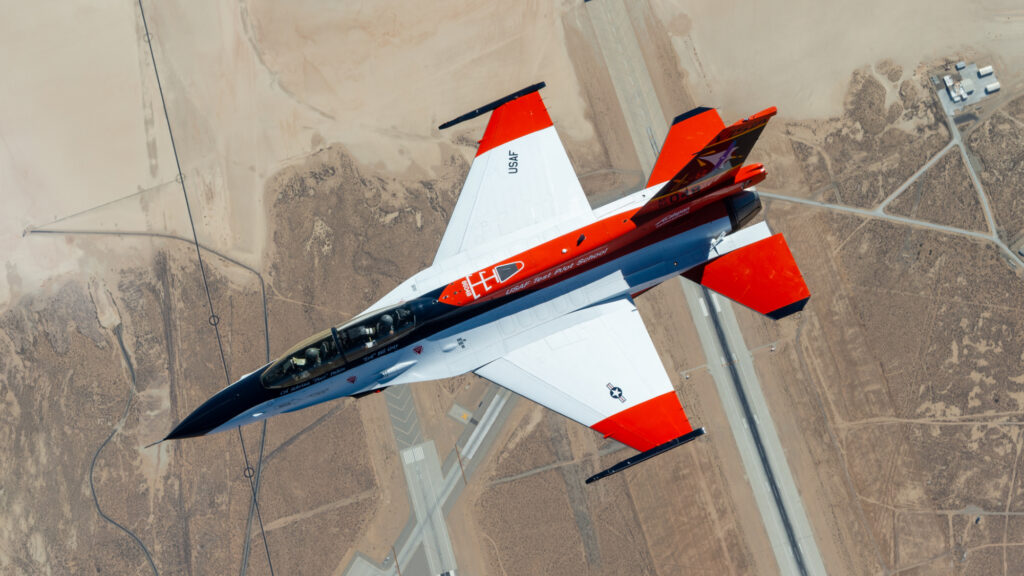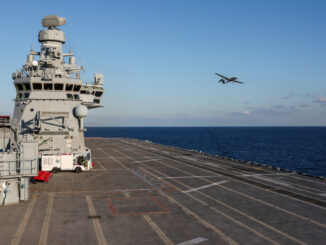 At the end of November 2024, the tech guru and entrepreneur Elon Musk – and probably the future head of the new US Department of Government Efficiency – posted a series of messages on X social media platform (formerly known as Twitter) he owns, aimed against the US aviation development programmes and especially the F-35 Lighning II 5th generation combat aircraft. Musk claimed that manned fighters are a thing of the past and asked for focusing on drones instead.
At the end of November 2024, the tech guru and entrepreneur Elon Musk – and probably the future head of the new US Department of Government Efficiency – posted a series of messages on X social media platform (formerly known as Twitter) he owns, aimed against the US aviation development programmes and especially the F-35 Lighning II 5th generation combat aircraft. Musk claimed that manned fighters are a thing of the past and asked for focusing on drones instead.
It all started with Musk´s post including a short video of a swarm of, most probably, Chinese small-size unmanned aerial vehicles (UAV), with a comment directly pointing their advantage over the crewed aircraft: ´Meanwhile, some idiots are still building manned fighter jets like the F-35´. In his later posts, Musk continued to criticise the Joint Strike Fighter programme and at the same time emphasised that crewed aircraft are nothing but obsolete technology.
Musk´s activity on X and his criticism almost immediately received widespread media attention. The aforementioned posts not only sparked a lively discussion on the future of the F-35 programme and technological capabilities of the future UAVs, but also caused the stock price of Lockheed Martin, the manufacturer of the US 5th generation fighter jet, dropped by more than three percent.
Regrettably, the voice of real expert on unmanned combat aircraft technology was overwhelmed by the daily flood of information that appeared with regards to Musk´s opinion. In his statement for Defense One, the USAF Brig. Gen. Doug Wickert, Commander of the 412th Test Wing, made the dreams about unmanned combat aircraft to face reality. ´There may be someday we can completely rely on robotized warfare´ he said, but ´it is centuries away´.

Brig. Gen. Doug Wickert and nearly 8,000 personnel of the 412th Test Wing at Edwards AFB, California, are taking care of developmental test and evaluation of current and future aircraft of the USAF, such as KC-46, F-35, F-22, F-16, B-21, eT-7A and RQ-4, as well as emerging technologies.
Wickert is a distinguished graduate from the US Air Force Academy, US Naval Test Pilot School and holds advanced engineering degrees from Massachusetts Institute of Technology and Air Force Institute of Technology. In August of 2023 he was appointed the Commander of the 412th Test Wing and in October of 2024 promoted to Brigadier General.
One of the most important development programmes evaluated by the 412th Test Wing is the Air Combat Evolution (ACE) initiative by Defense Advanced Research Projects Agency (DARPA). Within the programme, both the USAF and DARPA are working together on artificial intelligence algorithms in X-62A VISTA aircraft.
In February of 2024, USAF and DARPA – for their breakthrough achievements of the ACE programme – were announced one of four finalists of the Robert J. Collier Trophy, an annual aviation award administered by the US National Aeronautic Association.
In less than a calendar year the USAF/DARPA team went from the initial installation of live artificial intelligence (AI) agents into the X-62A systems, to demonstrate the first AI versus human within-visual-range engagements, otherwise known as a dogfight. In total, the team made over 100,000 lines of flight-critical software changes across 21 test flights. Then, the AI paired the X-62A VISTA against manned F-16 aircraft in the skies above the Edwards air force base.

The achievements of the ACE programme were a real milestone on the road to fully independent, AI-controlled aircraft, at the same time breaking one of the most significant barriers in combat aviation. The USAF/DARPA team made the first step towards more advanced use of non-deterministic AI and opened doors for a variety of new research programmes.
However, as Wickert emphasized in his statement for Defense One, AI still makes unexpected choices during flight tests. Therefore, in his opinion, manned combat aircraft will remain the core of any air force for decades.
The General Dynamics NF-16D VISTA experimental aircraft was built in the early 1990s. The jet is based on F-16D Block 30 of the Israeli Air Force variant. Its name – VISTA, is an abbreviation from Variable Stability In-flight Simulator Test Aircraft. The NF-16D performed its maiden flight in April of 1992.
In 2021, significant upgrades were made on the aircraft as part of Skyborg programme. They included implementation of System for Autonomous Control of Simulation (SACS). In addition, the aeroplane then received its current designation, X-62A.
The ACE programme is a result of collaboration between academia, government, and private industry. The governmental partners include the Air Force Test Center, Air Force Research Laboratory, DARPA and the Air Force Test Pilot School, while the academic ones include Johns Hopkins University and MIT’s Computer Science and Artificial Intelligence Laboratory. Industry partners on the ACE programme include Calspan Corporation, Cubic Corporation, EpiSci, Lockheed Martin Skunk Works and Shield AI.
Cover photo: The X-62 VISTA flies in the skies over Edwards Air Force Base, 23 March 2023 (USAF photo by Ethan Wagner, cropped).
All photos © U.S. Department of Defence (DoD). DoD information materials were used, in compliance with Public Domain licence. The appearance of U.S. Department of Defense (DoD) visual information does not imply or constitute DoD endorsement.



